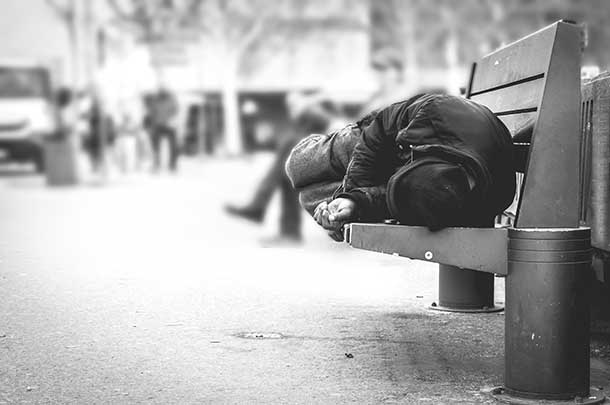The numbers tell a startling story about Los Angeles’ current homelessness crisis: Between 2010 and 2017, L.A. County’s homeless population surged 42% from 38,700 to more than 55,000 people. The 2018 Greater Los Angeles Homeless Count reports that more than 65% of homeless adults have lived in the county for more than 20 years, and almost half of people experiencing homelessness for the first time cited the loss of employment or financial strain as the primary cause.
Associate Professor of Clinical Occupational Therapy Deborah Pitts, PhD, MBA, OTR/L, an expert in psychosocial rehabilitation and community-based occupational therapy programming in the USC Chan Division of Occupational Science and Occupational Therapy, has seen the growing crisis firsthand. “Over the last several years, there has been an effort to address the health needs,” she said. “For people living on the streets, they age sooner, have all sorts of complications, fall through on recommendations and of course, being homeless, need access to housing.”
Pitts recently was awarded a Workforce Education and Training Program Public Mental/Behavioral Health Pipeline Grant from the State of California’s Office of Statewide Health Planning and Development. The new grant provides customized learning experiences, academic support, career development, mentorship and financial assistance in order to increase the number of USC Chan occupational therapy students who go on to pursue an OT career in public mental/behavioral health services.
While USC has long been working with Downtown L.A.’s Skid Row through efforts led by the USC Dworak-Peck School of Social Work, Pitts says that occupational therapists got involved seven years ago when the university set up a student-run interprofessional clinic. Today, that USC Student-Run Clinic uses a team-based approach of faculty members and students from pharmacy, medicine, physician assistant studies and OT — including mentorship, courtesy of Pitts — to provide comprehensive care to the homeless.
USC Chan occupational therapists are also helping through the Skid Row Housing Trust (SRHT) project. Pitts recalls getting an email from the organization about bringing in an occupational therapist to join their permanent team.
“I responded immediately,” she said. “Anyone who wanted to talk to us about what we can do, I was interested.”
Phil Lee, MA, is an occupational therapy doctorate student currently doing his yearlong practice residency training at Skid Row Housing Trust. There, spread across 26 buildings, 2,000 tenants are working to rebuild safe, stable and fulfilling lives. Lee knows occupational therapy can contribute toward that vision. Working alongside SRHT residents, he offers strategies, techniques and resources that empower residents to perform meaningful daily activities and build towards their long-term life goals.
“For me, as an OT, I’ll help them with literally anything — ADLs/ IADLs, maintaining their unit, helping them re-engage in meaningful activities,” Lee explained. “With another tenant, I’m playing a care coordination role.”
Stephanie Moon, OTD, MA, is a USC Chan alumna now working in public mental health. While at USC, she worked with the Student-Run Clinic and was drawn to the John Wesley Community Health (JWCH) Institute, the area’s largest homeless health care agency. From that initial volunteer role, she was able to negotiate an independent study position and, then, land a clinical doctorate residency at JWCH.
Less than one year since graduating, Moon now works as director of behavioral health and case management, supervising managers and social workers at the MLK Jr. Recuperative Care Center located in South L.A.
“Occupational therapists are trained in the holistic picture,” she said. “We have the training across the spectrum, and our focus is on function.” With her USC Chan training, Moon said she can confidently work across various specialties to better meet the needs of people with health challenges. She hopes that an OT-centric view of function can one day soon be at the heart of homeless health care.
“For me, there is just something very sacred about stepping into a space with a person in need, and serving them,” she said.
Approximately 5% of the American OT workforce is in mental health-related services. But Pitts is optimistic, thanks in part to her pipeline training grant, about the presence and contributions that occupational therapists make for vulnerable populations in these care settings.
“We are one of those providers who straddle the behavioral health and medical world.”
— Katharine Gammon


